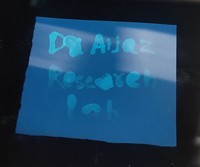Advertisement
Grab your lab coat. Let's get started
Welcome!
Welcome!
Create an account below to get 6 C&EN articles per month, receive newsletters and more - all free.
It seems this is your first time logging in online. Please enter the following information to continue.
As an ACS member you automatically get access to this site. All we need is few more details to create your reading experience.
Not you? Sign in with a different account.
Not you? Sign in with a different account.
ERROR 1
ERROR 1
ERROR 2
ERROR 2
ERROR 2
ERROR 2
ERROR 2
Password and Confirm password must match.
If you have an ACS member number, please enter it here so we can link this account to your membership. (optional)
ERROR 2
ACS values your privacy. By submitting your information, you are gaining access to C&EN and subscribing to our weekly newsletter. We use the information you provide to make your reading experience better, and we will never sell your data to third party members.
Synthesis
Chemistry In Pictures
Chemistry in Pictures: Minor changes
by Manny I. Fox Morone
December 30, 2021


These three tubes contain very similar dyes, but seemingly minor tweaks to their molecular structures produce notably different fluorescent colors. Shaista Hassan Lone, a principal investigator at the University of Kashmir, studies the structures of crystalline compounds and how those crystal structures affect the compounds’ properties. She made these Schiff bases to see how small differences in their structures (shown below) change the way the molecules pack in a crystal and thus affect their colors. Now she’s using confocal microscopy and X-ray diffraction to analyze these crystals in an effort to find dyes that can be used to color silk. These three tubes contain very similar dyes, but seemingly minor tweaks to their molecular structures produce notably different fluorescent colors. Shaista Hassan Lone, a principal investigator at the University of Kashmir, studies the structures of crystalline compounds and how those crystal structures affect the compounds’ properties. She made these molecules to see how small differences in their structures (shown below) change the way the molecules pack in a crystal and thus affect their colors. Now she’s using confocal microscopy and X-ray diffraction to analyze these crystals in an effort to find dyes that can be used to color silk.
Submitted by Shaista Hassan Lone
Do science. Take pictures. Win money. Enter our photo contest here.







Join the conversation
Contact the reporter
Submit a Letter to the Editor for publication
Engage with us on Twitter